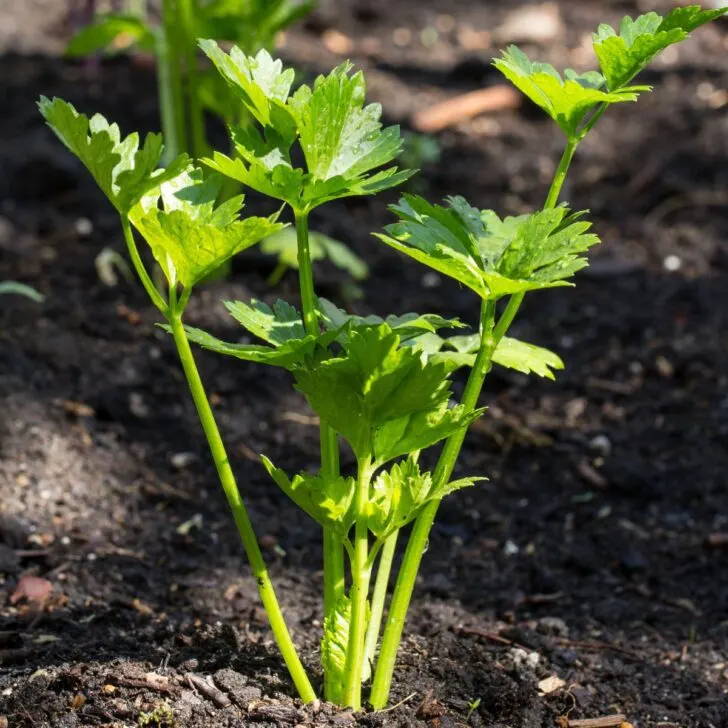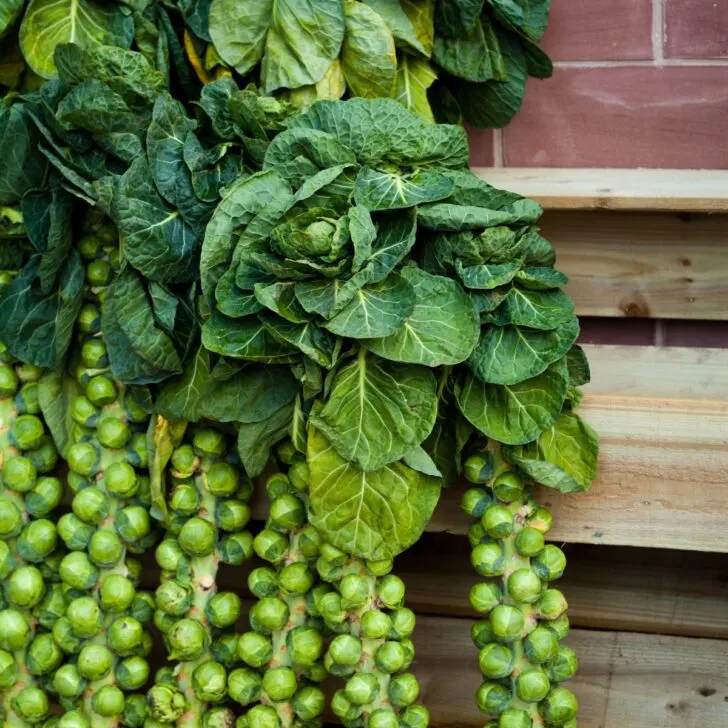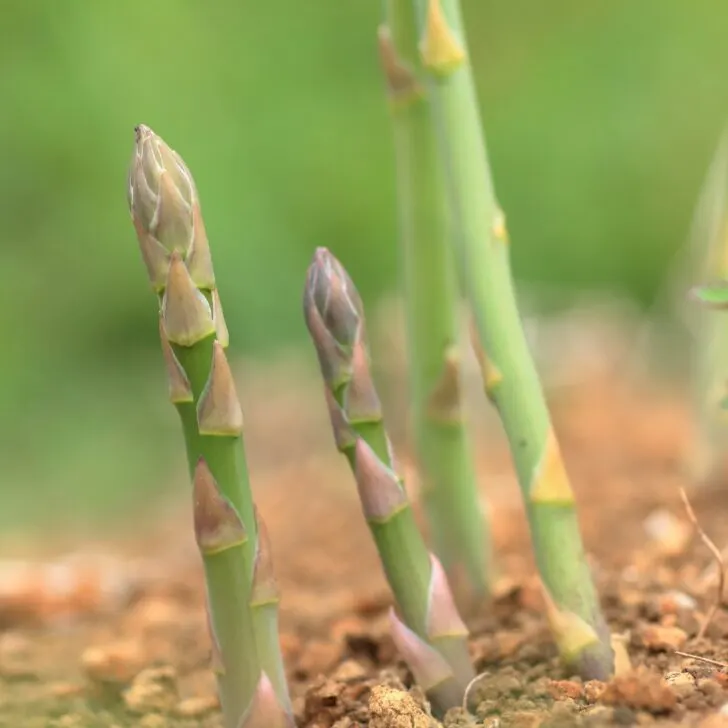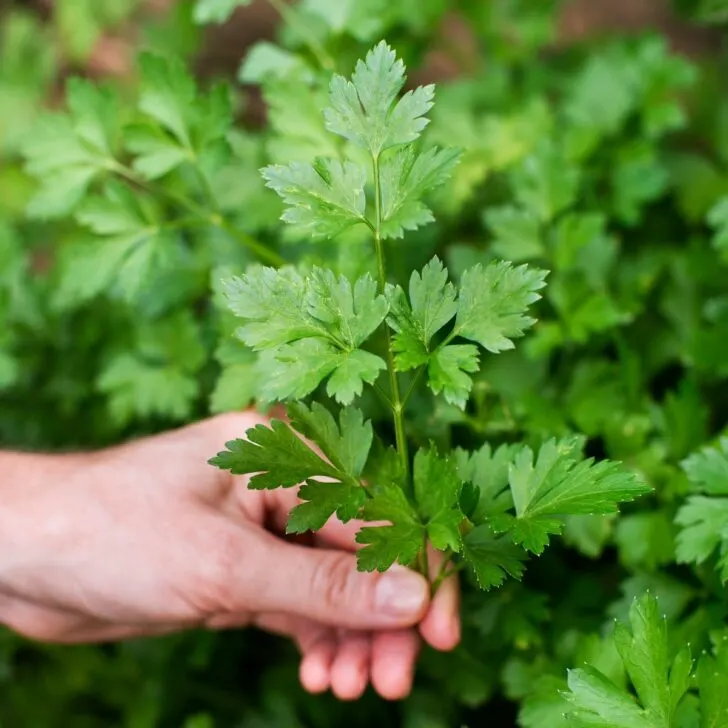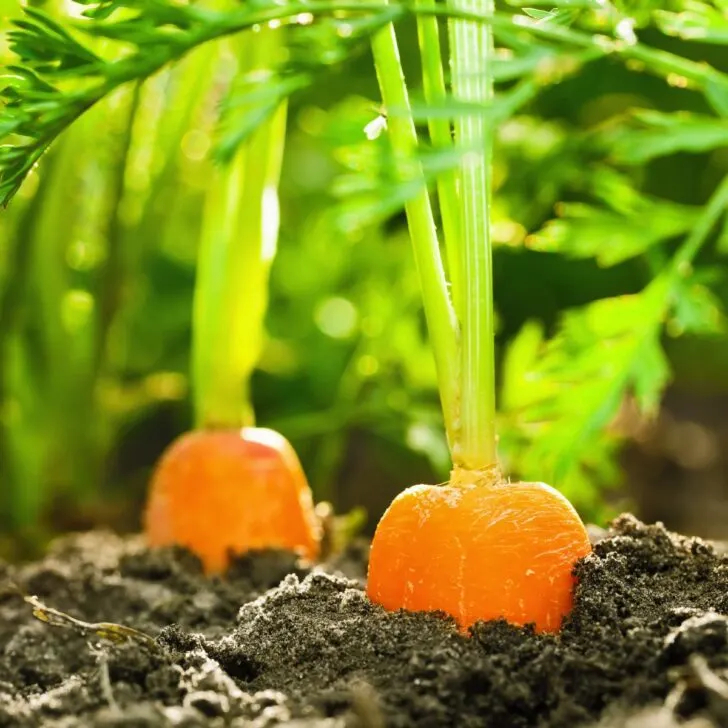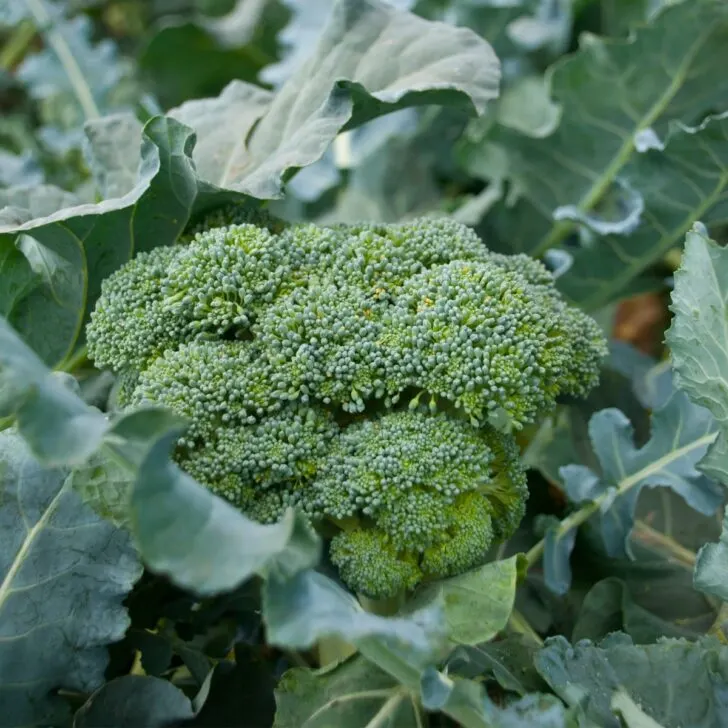Discover the best companion plants for spinach to boost growth, deter pests, and maximize your vegetable garden's overall health.
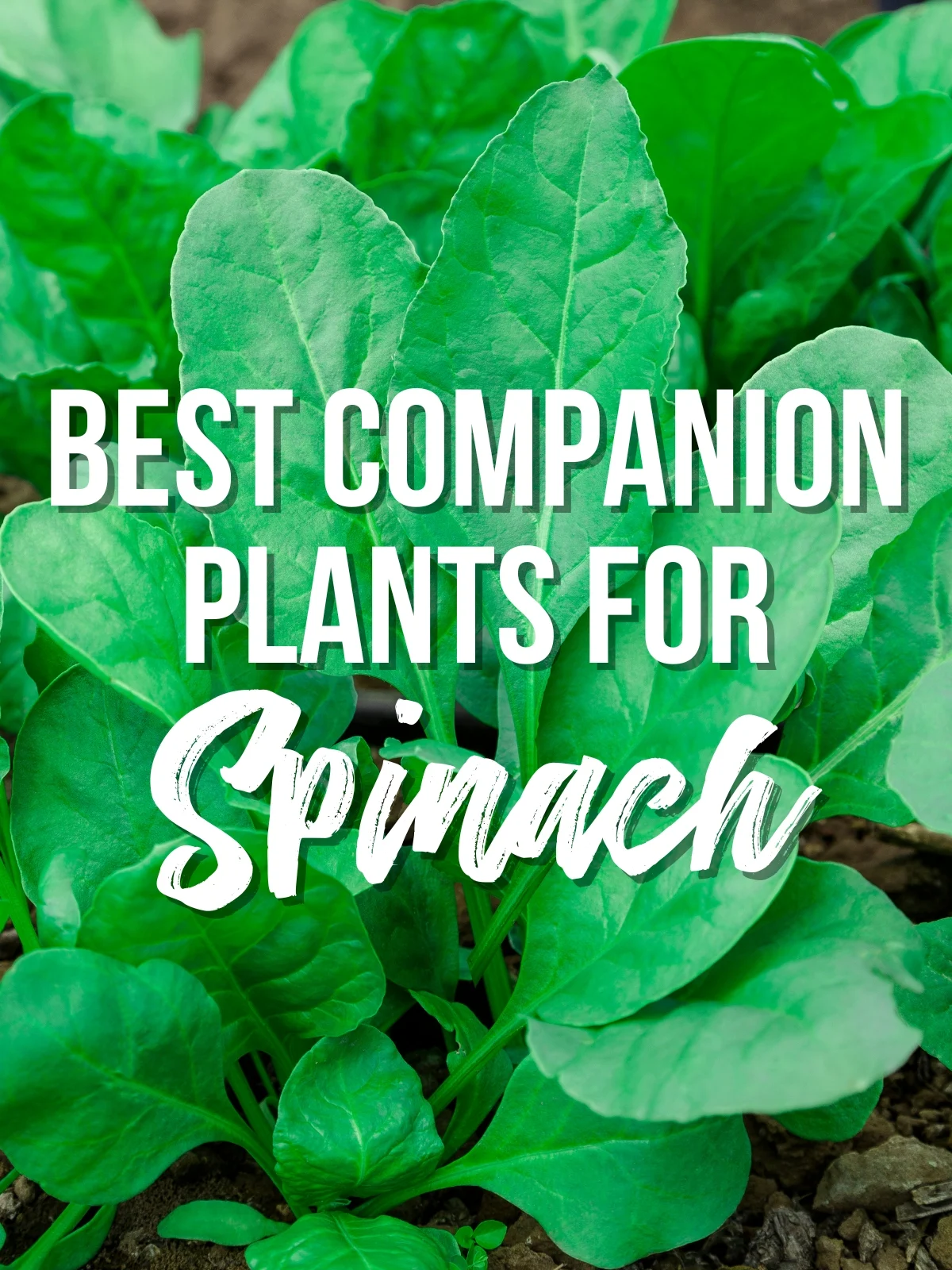
Would you like some help in the garden? Consider letting the plants assist you by companion planting. This gardening technique can increase your harvest with less effort!
Growing the right plants close together can repel pests, improve the use of soil nutrients, save garden space, and so much more. A square foot garden bed like the one shown below takes advantage of these properties and allows you to grow more in a small space!
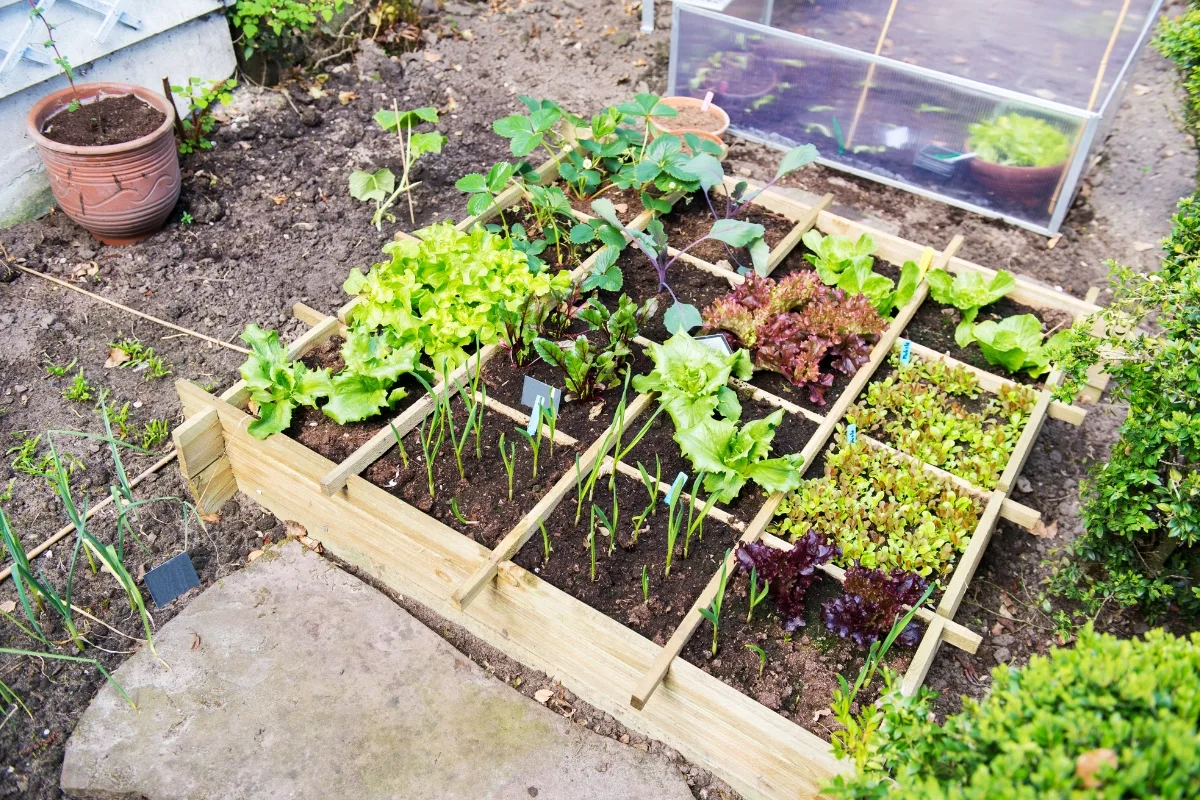
So what grows well with spinach? And which plants should you avoid? Let's find out!
This post contains affiliate links for your convenience. Purchases made through these links may earn me a small commission at no additional cost to you.
Things to know about growing spinach
Before you start planning out your vegetable garden, it helps to understand how each plant grows and how it can benefit from its neighbors. Here's what you need to know about growing spinach.
Soil and Sunlight
Spinach thrives in well-draining soil with a pH level between 6.0 and 7.5. Before planting, it's a good idea to enrich the soil with compost or a balanced fertilizer to provide the necessary nutrients.
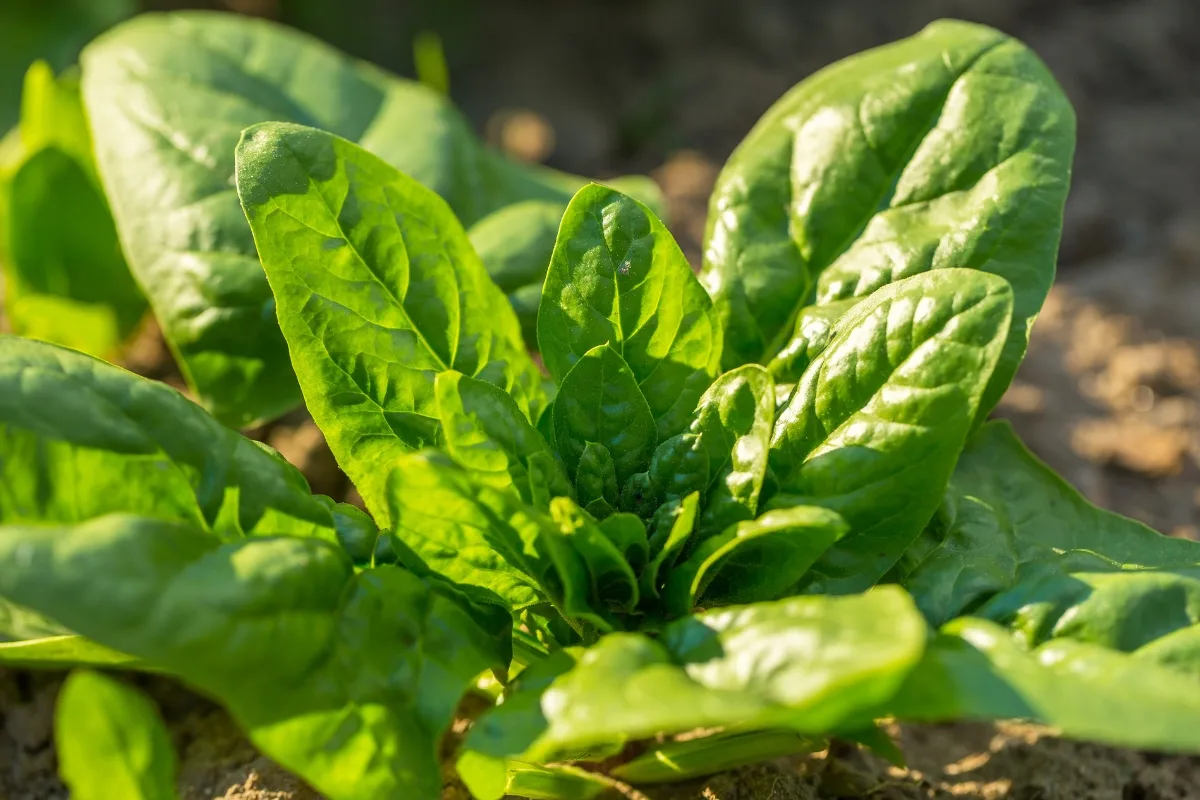
Spinach prefers full sunlight, but it can also tolerate partial shade. In fact, in hotter climates, a bit of afternoon shade can prevent the plant from bolting too quickly. For this reason, spinach makes a good companion with larger plants, growing happily in their shadow.
Planting Time
Spinach is a cool-weather crop. As the season gets hotter, many spinach varieties will start to set seed, making the taste less appealing.
This means it's best to plant it in early spring or late summer/early fall. In spring, you can start sowing spinach seeds as soon as the soil can be worked.
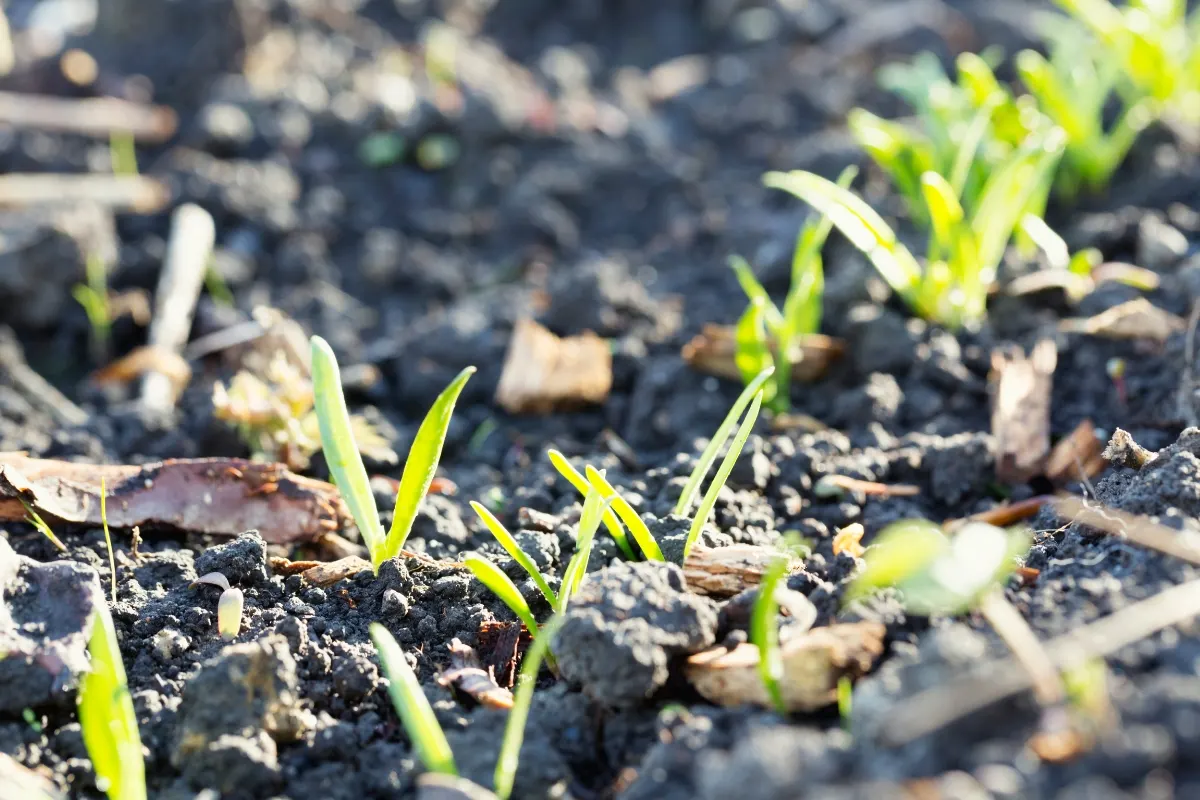
For a fall harvest, plant the seeds about 6-8 weeks before the first expected frost. If you're in a region with mild winters, spinach can even be grown throughout the winter months.
Watering and Care
Consistent moisture is crucial for spinach. The soil should be kept moderately moist but not waterlogged. Mulching can help retain soil moisture and also keep the leaves clean.
It's essential to be on the lookout for pests like aphids or leaf miners. Some of the best companion plants for spinach repel these pests so you don't have to use insecticides!
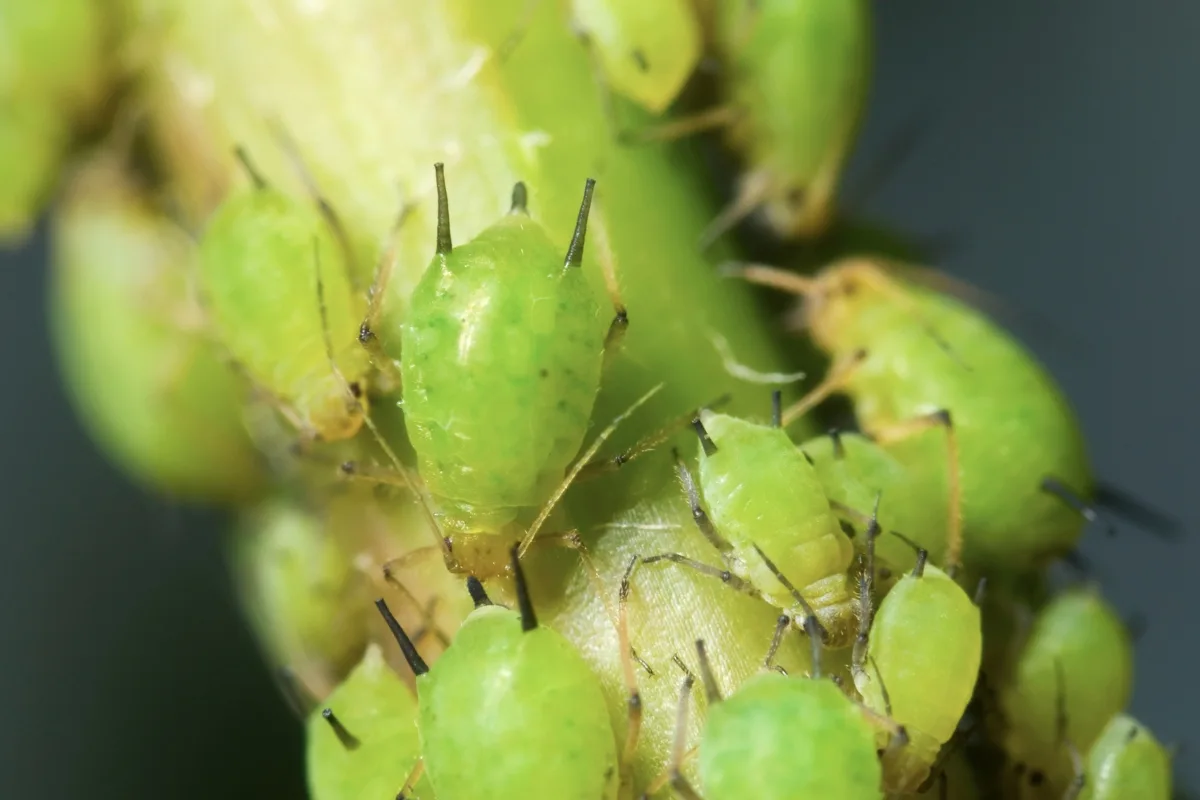
Harvesting
You can start harvesting spinach when the leaves are big enough to eat! For baby spinach, this might be when the leaves are around 3-4 inches long. For mature leaves, wait until they're about 6 inches or more.
Remember to harvest from the outer leaves first, allowing the center leaves to continue growing. This method ensures a continuous harvest throughout the season.
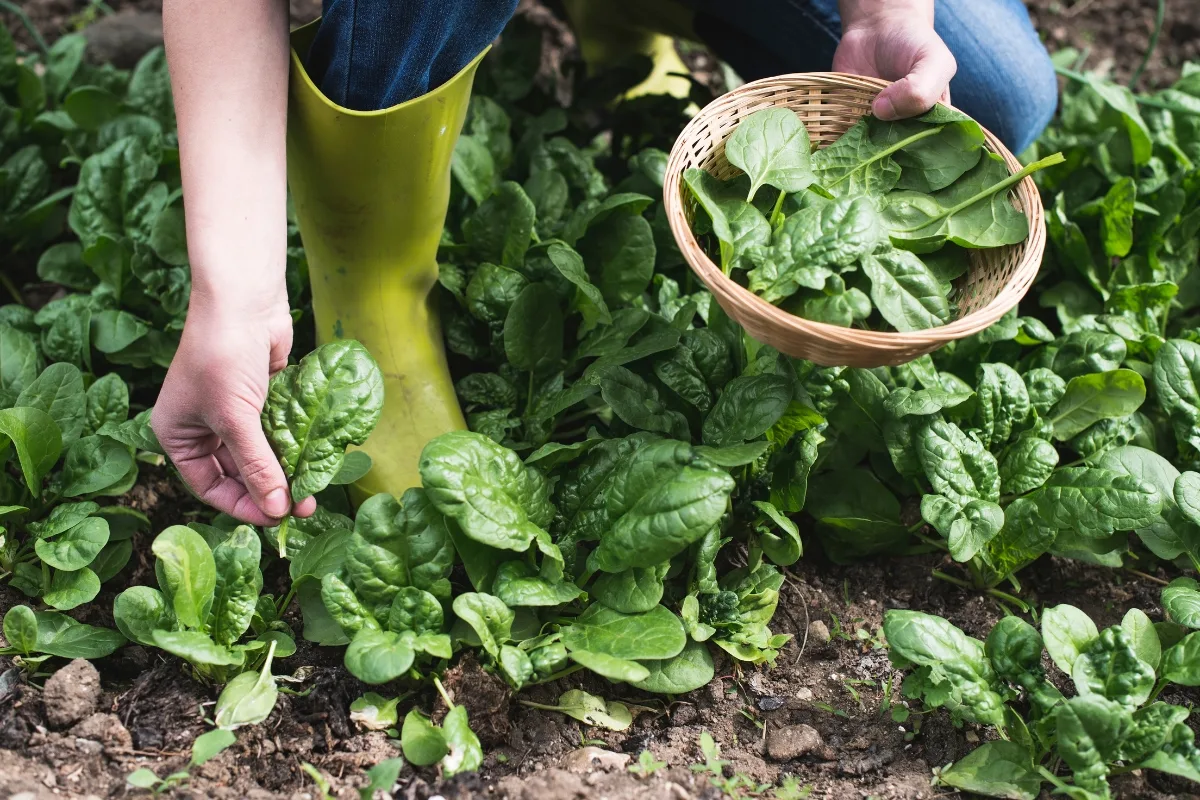
Growing spinach is quite rewarding. Not only is it a versatile vegetable in the kitchen, but it's also packed with nutrients. With a bit of care and attention, you'll have a bountiful spinach harvest in no time!
Best Companion Plants for Spinach
By far, the best companion plants for spinach are peas and beans. When grown on a trellis, these plants can provide shade that helps delay bolting in spinach. In addition, these legumes fix nitrogen from the air, making it available to the spinach to ensure a dark green color and fast growth.
Other good companions for spinach include:
- Radishes, like spinach, grow fast and are best planted early in the growing season. When leaf miners attack radishes, they don't cause significant damage, but they stay away from the spinach.
- Strawberry plants grow from crowns planted deeper in the soil than shallow-rooted spinach, so these two plants can team up to take nutrients from different depths of the ground. Strawberry plants also cover the soil's surface, retaining moisture and reducing weeds around spinach plants.
- Onions repel many pests that might be attracted to spinach. Their strong scent can deter aphids and other insects.
- Lettuce and chard are other fast-growing leafy greens that need lots of nitrogen, like spinach. They also grow best in the spring, making these plants highly compatible in the same garden bed, and growing them together can save garden space.
- Brassica plants such broccoli, cabbage, kale, mustard greens, turnip greens, Brussels sprouts, and cauliflower, all thrive in the same cool season timeframe as spinach, so they can easily grow near each other. Brassicas also have a similar need as spinach for high nitrogen fertilizer and ample water, making them good companions.
- Cilantro also thrives in cool weather and bolts quickly when it warms up, so these two can be planted at the same time. However, cilantro might require more frequent watering, which could lead to over-watering the spinach. Setting up your garden on drip irrigation with different emitters for each crop can help with this issue.
- Marigolds are known to repel various pests with their strong scent. They can act as a natural insect repellent, protecting the spinach.
- Nasturtiums can benefit spinach by acting as a trap crop, drawing away pests like aphids from spinach plants.
- Carrots are another early-season crop that combines well with spinach. Carrots and spinach use different nutrients from different depths in the soil.
- Zinnia and cosmos are annual flowers that can help spinach plants by attracting predatory insects to feed on spinach pests.
- Dill attracts beneficial insects like ladybugs and predatory wasps, which can help control pests that might target spinach.
Bad companion plants for spinach
Not all plants play well together. Here are some things you should avoid growing near spinach:
- Potatoes don't pair well with spinach because they can attract flea beetles that stunt spinach growth and eat holes in the leaves, making them less appealing. Both spinach and potatoes are also susceptible to the same blight diseases. Growing them close together can increase the risk of disease spread.
- Fennel plants release chemicals in the soil that can damage spinach and many other vegetable plants, so keeping it in a separate garden area is best.
- Melons, pumpkins, and squash are summer crops that sprawl across the ground, crowding out spinach plants. These plants also grow best in weather that is too warm for spinach.
- Sunflowers produce chemicals that slow the growth of many plants, including spinach. In addition, these two grow best at different times of the year.
- Grapes require a different pH level in the soil compared to spinach. If you're adjusting the soil for grapes, it might not be suitable for spinach.
- Beets, Swiss chard and spinach are all prone to leaf miners. Planting them together can attract a higher number of these pests.
Tips for Companion Planting with Spinach
When inter-planting spinach with other leafy greens like lettuce, kale, and chard, leave enough room between the plants. Crowded conditions reduce air circulation, inviting fungal diseases and pests like slugs that love eating leafy greens. By maintaining 16 inches between rows, you can reduce the chances of this problem.

Premature bolting is often a problem when growing spinach. The leading causes are planting too late in the season, crowding the plants close together, and insufficient water. When choosing companion plants for spinach, be sure to keep these points in mind and choose plants with similar growing requirements.
Remember, while companion planting offers many advantages, it's essential to monitor your garden and adjust as needed. Observing how plants interact with each other will give you insights into what works best for your specific garden conditions.
Check out these other companion planting articles!

